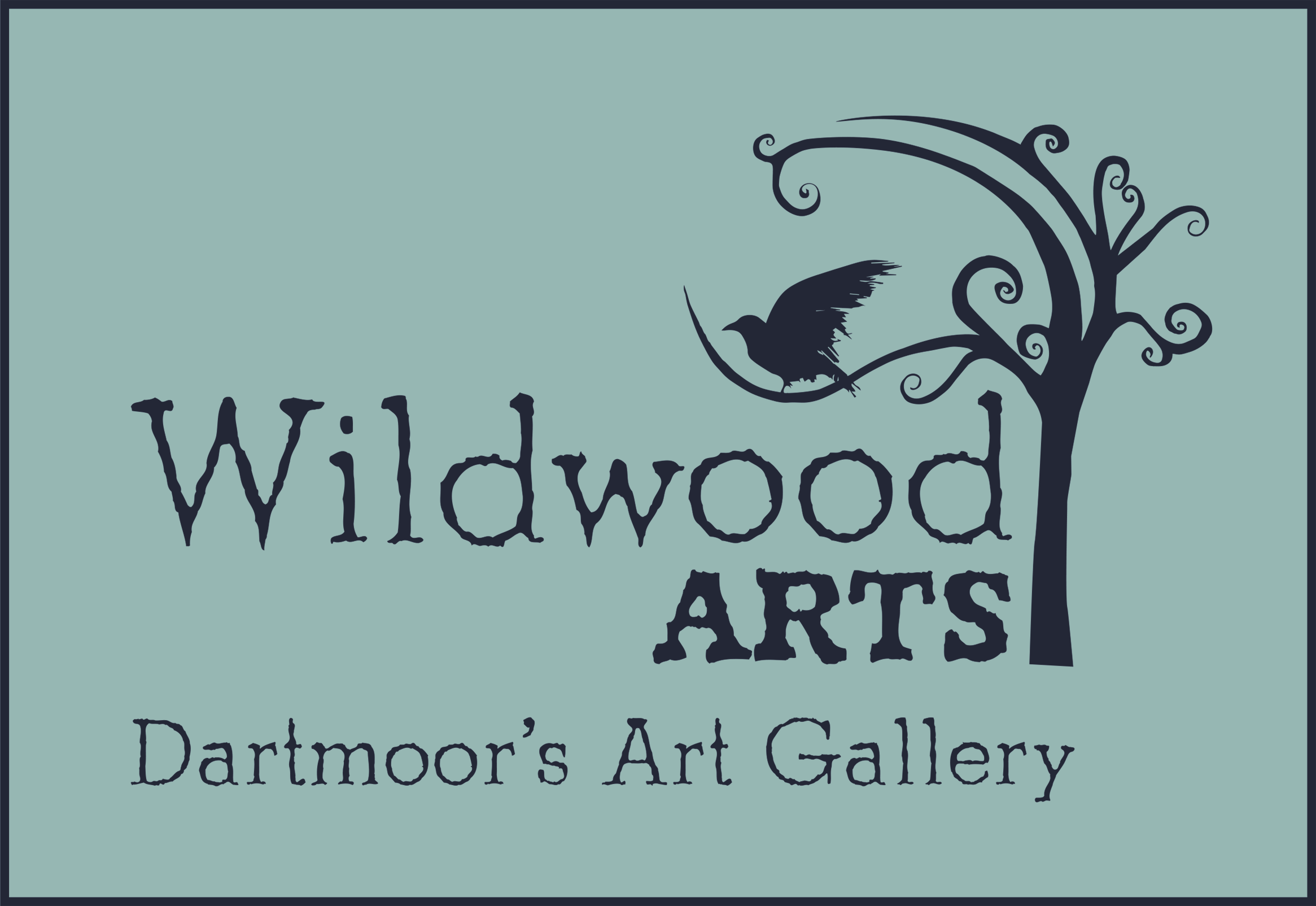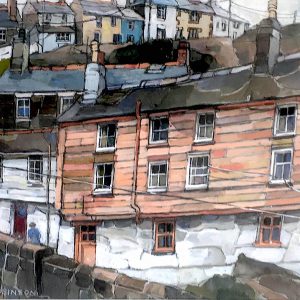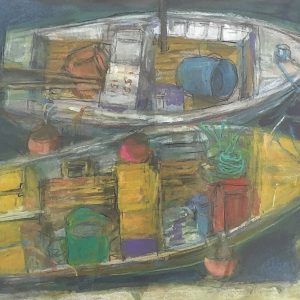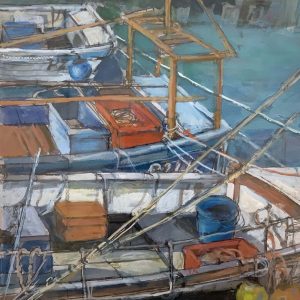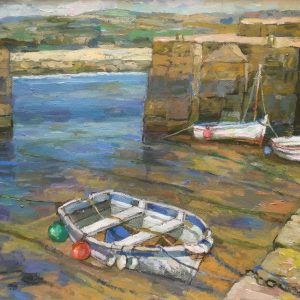Sonia Robinson RSMA, SWA. 'Royal Society of Marine Artists | Society of Women Artists'
[bg_collapse_level2 view=”link” color=”#4a4949″ icon=”zoom” expand_text=”Artist Biography” collapse_text=”Show Less” ]
Royal Society of Marine Artists, The Society of Women Artists, Newlyn Society of Artists, St. Ives Society of Artists
Born 1927 in Manchester. Trained at the Manchester School of Art and in London at the Hornsey School of Art. From 1947, worked as a freelance mural painter and then as a landscape painter exhibiting in London galleries. In the late 1960s, she moved from Hampstead, London to Mousehole in Cornwall, where she still lives and works.
She was elected a member of the Royal Society of Marine Artists in 1978 and acted as their Hon Secretary from 1994 to 1999. Her election to membership of the Society of Women Artists was in 1991. She was also a member of the Newlyn Society of Artists and of the St Ives Society, the latter culminating after many years of membership in a very successful spell as their Chairman. She resigned from Newlyn at the beginning of the century and from St Ives in 2006.
Sonia Robinson works in oil and in watercolour/gouache, finding inspiration both in her beloved Cornwall coast and abroad, especially in small French towns, always looking for the harmony of pattern, tone and light for her subjects. She was the first recipient of the highly-regarded Donald F Blake Award at the RI. In addition to being a regular exhibitor at RSMA, SWA and RI shows, she has exhibited widely both within and outside the UK.
Her work is mentioned in several publications: in A Celebration of Marine Art; in James Taylor’s Marine Painting; and in Tony Paul’s Great Textures in Painting. The artist herself contributed two thoughtful well-illustrated articles to the Leisure Painter magazines of September 2003 and April 2004.
In October 2018 she was made a Life Member of the Royal Society of Marine Artists.
Sonia Robinson’s passion for drawing is most important for a thorough understanding of her subject matter. Pattern, negative shapes and the overall composition are thus realised – and convey why she wants to paint a particular scene. Inspiration comes from Giotto’s, Renaissance drawings and also Cezanne and The Glasgow Boys.
[/bg_collapse_level2]
Showing all 5 resultsSorted by latest
